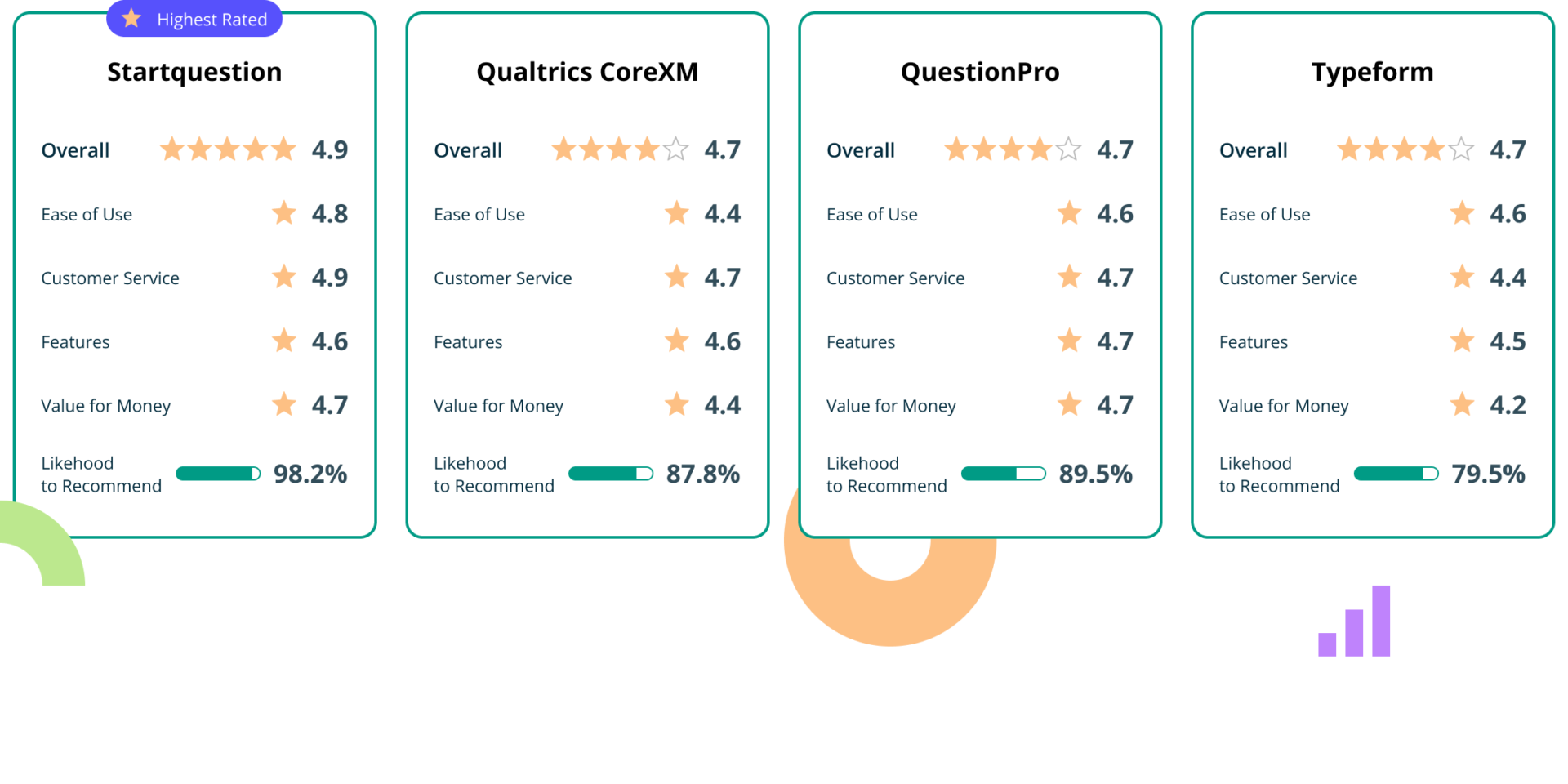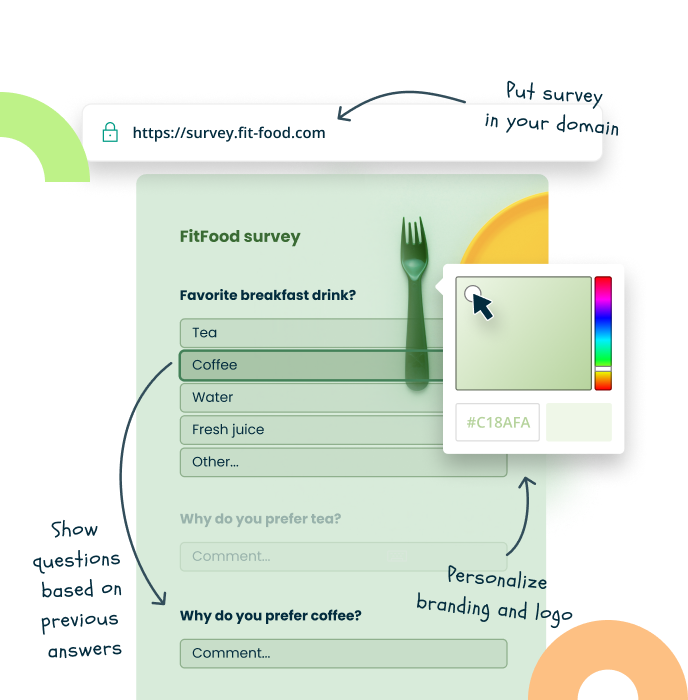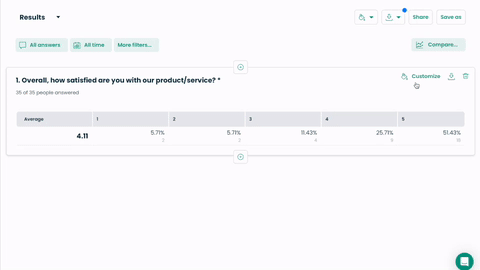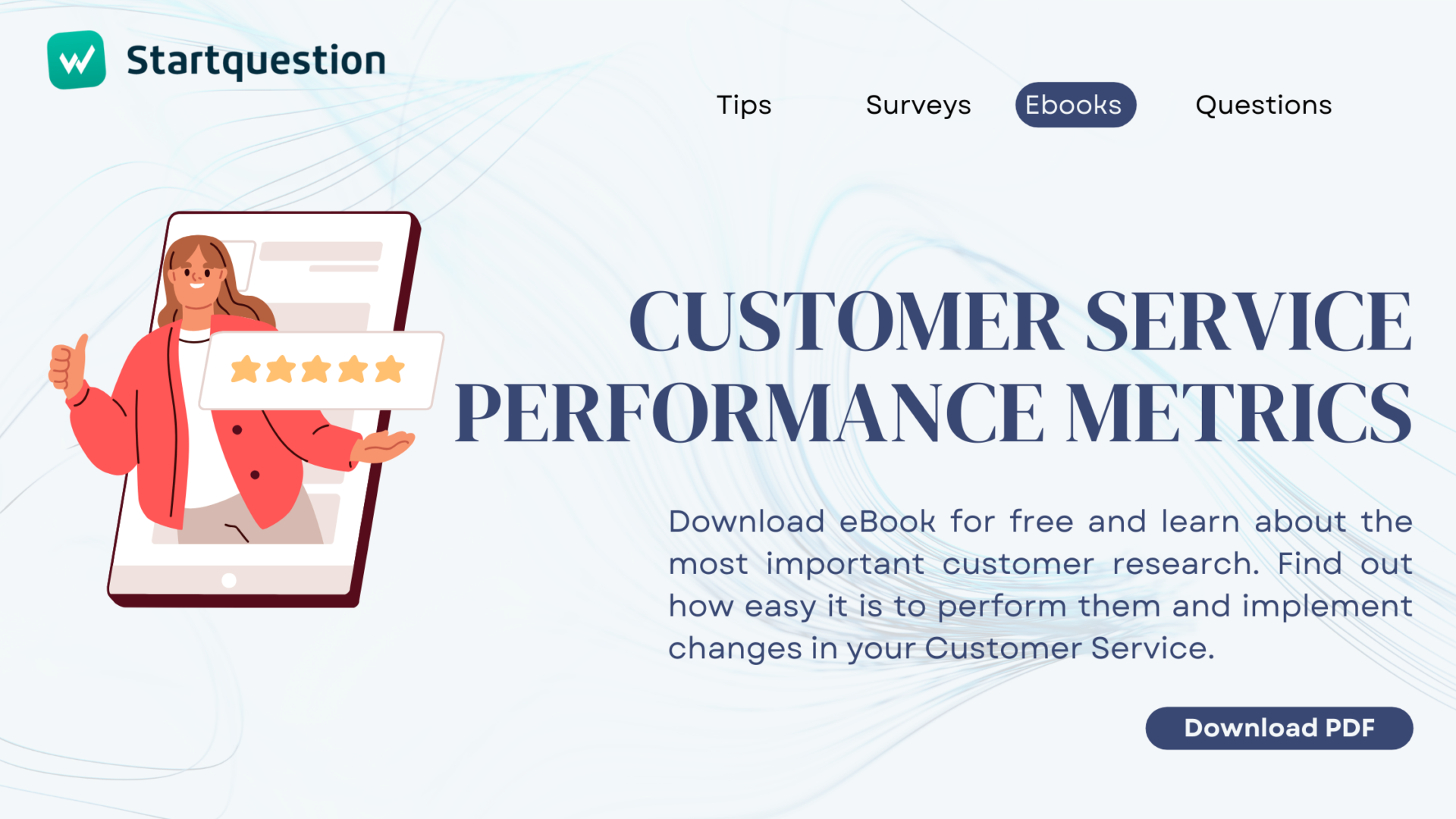Online surveys and questionnaires are two essential tools for collecting valuable insights about your customers, employees, and target audience and conducting any research project. Although these terms are sometimes used interchangeably, they represent distinct research methods with unique characteristics.
This article explores the definitions, use cases, key differences, and similarities between online surveys and questionnaires, providing valuable insights for anyone looking to use these tools effectively.
What Is a Questionnaire?
A questionnaire is a powerful tool for researchers, marketers, and employers to gather information from their focus groups or customers. It is a structured set of carefully crafted questions to obtain specific information from the respondents. The questions can be closed-ended, requiring a simple yes or no response, or open-ended, allowing the respondents to express their opinions in their own words (written responses).
Questionnaires are extensively used in academic research to collect data on various topics such as socio-economic conditions, health issues, and educational trends. Likewise, market research relies heavily on questionnaires to understand consumer preferences, buying behaviors, brand loyalty, and further statistical analysis.
Employers also use questionnaires to obtain valuable employee feedback on various aspects such as job satisfaction, work-life balance, and company culture. The advantage of using questionnaires is that they are often self-administered, allowing respondents to complete them conveniently. This results in higher response rates and more accurate statistical data collection.

Key Features of a Questionnaire:
- Structured questions
- Can be administered in various formats (paper, online, email)
- Collecting data both qualitative and quantitative
What Is a Survey?
A survey is a comprehensive research approach to gather data from a group of survey respondents to gain insights into a particular subject. Surveys are a versatile tool that can utilize various data collection methods, including questionnaires, interviews, and online polls. These techniques enable researchers to collect detailed information on multiple topics, such as consumer behavior, market trends, and social issues.
Surveys are widely used in different fields, such as marketing, social sciences, and customer feedback. Using other data collection techniques, they provide a holistic view of the subject under investigation. Questionnaires, for example, can gather quantitative data, while interviews can collect qualitative data. Combining these techniques allows researchers to capture a more nuanced understanding of the subject being studied.
Surveys are essential for researchers who want to gain a deeper understanding of a particular subject, analyze trends, and make informed decisions based on the collected data analysis.
Key Features of a Survey:
- Can include questionnaires, interviews, or a mix of methods
- Offers a comprehensive view of the research subject
- Can be conducted through different mediums (online, phone, in-person)
Survey vs. Questionnaire. When to Use Them?
Survey? Questionnaire? Which one should you choose to obtain valuable research data in certain situations? Here is a short guide that will help you make the optimal decision. These real-life examples help illustrate the practical applications of surveys and questionnaires in distinct contexts, emphasizing the differences in their use and the type of data they aim to collect.
Medical Questionnaires and Surveys
The first example discussed concerns medical surveys and questionnaires. Anyone who visits a doctor’s office at least occasionally has encountered them more than once. Therefore, it is easy to use their illustration to show the difference between both forms of collecting patient information.
Medical Interview Questionnaire
Imagine you’re walking into a doctor’s appointment. What does every good specialist do before examining and making a diagnosis? Talk to the patient. A medical interview is the basis of diagnosis. It allows the doctor to learn about the patient’s medical history, genetic predisposition, and lifestyle, even if they do not know the patient well.
In this case, a tool facilitating the doctor’s work will be a questionnaire – a set of standard questions that collect key, but still preliminary, information about the patient’s health condition.
Patient Satisfaction Survey
If you run a clinic or a facility providing professional healthcare, our survey template will help you quickly gain key knowledge about patient satisfaction.
Patient Satisfaction Survey
If you run a clinic or a facility providing professional healthcare, our survey template will help you quickly gain key knowledge about patient satisfaction.
Patient Satisfaction Survey
Several minutes later, the patient leaves the office. Did the visit meet expectations? Was the doctor’s behavior appropriate? Did the specialist approach the patient’s symptoms empathetically and do his best to diagnose accurately? Would the patient recommend visiting this medical facility and this specialist to his family and friends?
These are just examples of questions worth including in a patient satisfaction survey. Below you will find a ready-to-use template. Take a look at how it looks.
Questionnaires and Surveys for HR
Another area of life in which we often encounter surveys and questionnaires is work. In the era of widespread digitalization, you probably receive many emails from the HR department asking for opinions. Here’s how surveys differ from questionnaires in their work.
Training Registration Questionnaire
Whoever does not develop stands still; we know this well and are happy to improve our professional skills. Employers also know this when sending employees to training. A quick form of registration, eagerly used by HR departments, is a questionnaire containing the scope of the training, proposed dates, and the possibility of fast enrollment.
Training Evaluation Survey
Human Resource professionals rely on training evaluation surveys, which serve as an invaluable tool to assess the effectiveness of training programs and ensure that the training provided is aligned with the organization’s overall goals. These surveys help organizations identify areas of improvement, provide valuable feedback to the trainers, and ultimately contribute to the organization’s overall success by enhancing employees’ knowledge, skills, and abilities. See the example below:
Post Training Evaluation Survey
Ensure that your employees receive all necessary resources during their training sessions.
Post Training Evaluation Survey
Ensure that your employees receive all necessary resources during their training sessions.
Customer Experience Surveys and Questionnaires
The last example we want to show you are CX surveys and questionnaires. Let’s see how customer satisfaction surveys differs from questionnaires collecting information from the client.
Reporting a Road Traffic Collision
Even the best driver can have an accident. What do you do then? If, of course, the collision is not severe and all participants in the event are safe and sound, you inform the insurer about the accident. A good insurer will prepare a ready-made questionnaire for its clients in paper or online form (hey, it’s the 21st century, after all) and guide them through a telephone conversation with a consultant.
Customer Satisfaction Survey
A few days after the collision, the car is ready to be picked up from the service center. Did the mechanics do their job well? Is there no trace of a slight dent on the fender, and is the color of the painted element the same as the rest of the vehicle? A customer satisfaction survey can answer these and many other questions. It is an essential tool for websites that want to stand out from the competition and shine with five stars on Google Maps, not two with plenty of negative comments.
Customer Satisfaction Survey
Customer satisfaction is the cornerstone of any successful business. Happy customers are more likely to remain loyal, refer others, and ultimately drive growth.
Customer Satisfaction Survey
Customer satisfaction is the cornerstone of any successful business. Happy customers are more likely to remain loyal, refer others, and ultimately drive growth.
Practical Ways of Sharing Questionnaires and Surveys
Researchers can increase the reach and engagement of their surveys and questionnaires by using various distribution methods. The choice of distribution method should be based on the type of research, the target audience, and the desired level of interaction. By doing so, researchers can ensure that their surveys and questionnaires efficiently and effectively reach the intended audience.
QR Code Distribution:
Integrating QR codes into marketing materials, packaging, or physical spaces is a modern way to distribute surveys. Respondents can scan the QR code with their smartphones, leading them directly to the survey link.
Advantages:
1. Quick and convenient access
2. Suitable for physical marketing materials
3. Appeals to tech-savvy audiences
Pop-Up Surveys on Websites:
Researchers can effortlessly gather valuable insights from website visitors by employing unobtrusive pop-up surveys strategically timed during user interactions while ensuring a seamless user experience.
Advantages:
1. Captures feedback in real-time
2. Engages visitors during their online journey
3. Can be targeted to specific website pages or user behaviors
In-Person Distribution:
When conducting research in specific contexts such as events, conferences, or community outreach programs, distributing paper-based surveys or questionnaires in person may be the most appropriate method.
Advantages:
1. Direct interaction
2. Immediate responses
3. Ideal for specific target groups
Social Media Engagement:
Leveraging social media to share surveys can amplify reach. Researchers can post links or create engaging content to encourage participation.
Advantages:
1. Viral potential
2. Diverse audience engagement
3. Cost-effective promotion
Email Distribution:
Sending surveys or questionnaires via email is an effective method. Researchers can embed survey links directly into emails, making participation easy.
Advantages:
1. Targeted audience reach
2. Personalized communication
3. Controlled distribution

Creating Effective Online Questionnaires and Surveys
If you wish to create a survey or questionnaire that provides valuable insights and helps you make informed decisions, there are some essential steps that you should follow.
These steps include identifying your research objectives, determining the target audience, selecting appropriate survey questions, designing a user-friendly survey layout, and analyzing the data collected.
By implementing these strategies, you can create online questionnaires and surveys that collect valuable data and provide a positive experience for respondents, ultimately enhancing the success of your research efforts.
Define Clear Objectives:
Clearly outline the goals of your questionnaire or survey. What specific information are you seeking to gather? Define your objectives to guide the design process and ensure focused, relevant questions.
Know Your Audience:
Tailor your questions to your target audience. Consider demographics, preferences, and familiarity with the subject matter. This ensures that your questions resonate with respondents and that you receive accurate, valuable data.
Craft Concise and Clear Questions:
Use simple and unambiguous language. Ensure each question addresses a single point, avoiding confusion. Clear and concise questions lead to more accurate responses and a better overall survey experience.
Balance Question Types:
Incorporate a mix of question types to gather diverse data. Include closed-ended questions for quantitative analysis and open-ended questions for qualitative insights. This balance provides a comprehensive view of your subject.
Order Questions Thoughtfully:
Organize questions logically to maintain respondent engagement. Start with easy, non-intrusive questions before delving into more complex or personal ones. Consider the flow of your questionnaire to enhance the respondent experience.
Ensure Mobile-Friendly Design:
With the increasing use of mobile devices, optimize your questionnaire for mobile responsiveness. A mobile-friendly design enhances accessibility and ensures a seamless experience for respondents across different devices.
Pilot Test Your Survey:
Before launching your questionnaire or survey, conduct a pilot test with a small group to identify potential issues. Test for clarity, relevance, and technical functionality. Use feedback to refine and improve your survey instrument.
Incorporate Visual Elements Wisely:
Visual elements, such as images or charts, can enhance understanding. However, use them judiciously to avoid overwhelming respondents. Ensure that visuals support the questions without creating distractions.
Offer Incentives:
Encourage participation by offering incentives. Whether it’s a discount, a chance to win a prize, or access to exclusive content, incentives can increase response rates and engagement.
Provide Clear Instructions:
Clearly articulate how respondents should proceed through the survey. Include instructions on how to answer different question types and reassure respondents about the confidentiality of their responses.
Utilize Skip Logic:
Implement skip logic to personalize the survey experience. Skip irrelevant questions based on respondents’ previous answers, streamlining the survey and making it more engaging.
Test and Optimize:
Regularly review and optimize your questionnaire based on response patterns and feedback. Continuous testing and refinement ensure that your surveys evolve to meet changing needs and remain effective over time.

Collect Responses and Analyze Data with Survey Tools
By understanding the distinctions between online surveys and online questionnaires and utilizing various distribution methods, researchers can tailor their approach to meet the specific needs of their projects.
Whether seeking in-depth insights through surveys or quantitative research through questionnaires, the key lies in choosing the suitable method for the context. The dynamic nature of online data collection provides a wealth of possibilities for researchers to explore, ensuring they extract the most meaningful information from their target audience.
Properly selected survey software will allow the preparation and implementation of the study and the efficient and automatic collection and analysis of the results. See for free how our platform can help you with this.




